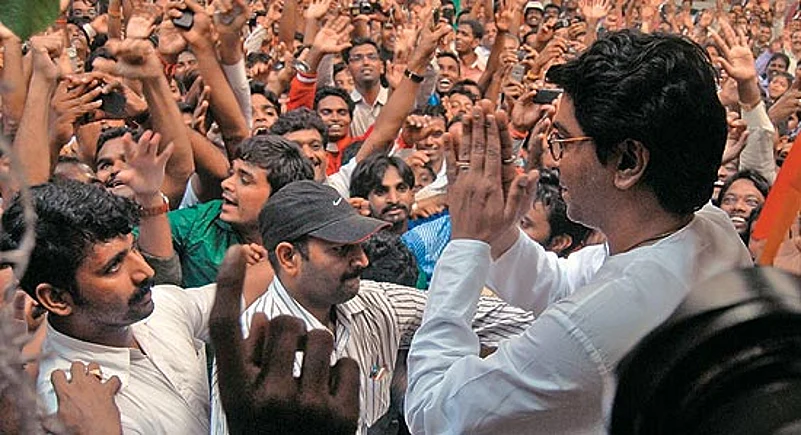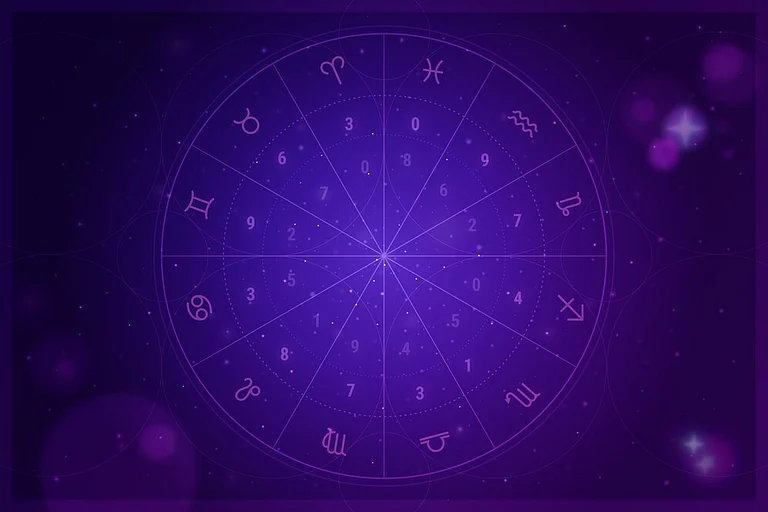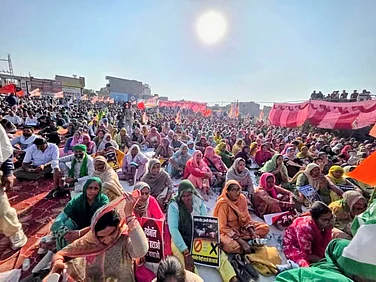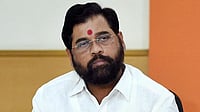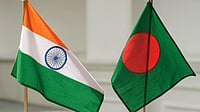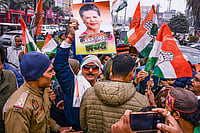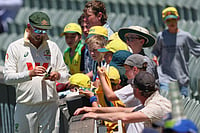It surely had the wind in its sails after the Lok Sabha polls. The Congress has now applied that momentum to conjure up the appearance of being a more cohesive entity today, especially when compared with the fractured opposition. So it’s not that surprising that it has retained power in Maharashtra (in alliance with the Nationalist Congress Party) and Arunachal Pradesh. The results in Haryana, however, prove that complacency and arrogance can still show you up. So, despite a divided opposition and a non-polarising Jat leader like Bhupinder Singh Hooda ensconced as CM, the party fell six seats short of a simple majority, with Jats outside Hooda’s Rohtak-Sonepat circle crossing over to Om Prakash Chautala’s Indian National Lok Dal (INLD). Indeed, the Haryana results may have been worse for the Congress had the BJP not broken up with the INLD.

Bang on Maharashtra CM Ashok Chavan celebrates with a sparkler in Mumbai |
That said, the electoral verdict from these three states will impact national politics in the coming months. The Congress’s bargaining power vis-a-vis the smaller parties will go up. And after the BJP’s dismal showing—especially in Maharashtra, where its pairing with long-time ally Shiv Sena failed to convince people to vote against a decade-old Congress-NCP regime—its allies elsewhere may begin to doubt its capabilities. In Bihar, jd(u) leader and CM Nitish Kumar will surely drive a hard bargain when that state and neighbouring Jharkhand—currently under President’s rule—go to the polls. Nitish may even be tempted to do a Naveen Patnaik, sever ties with the BJP altogether.
The biggest victory for the Congress was clearly Maharashtra: barring Andhra Pradesh, it’s the only big state where the Congress is in power. For CM Ashok Chavan, who’s been in the saddle for less than a year, it was a big day as he steered the party to the halfway mark in the 288-member legislative assembly, even improving the Congress’s tally. With its 82 seats to the NCP’s 62, it can now bargain to keep at least two of the three big portfolios—home, finance and power.
Publicly, Congress leaders hailed the results as a mandate for their “development policies” since 1999, even though the past decade has seen the state slipping on most vital parameters of development. Privately, many of them concede that the fragmentation of the opposition vote did help and that the results were not so much a victory for the alliance as a defeat for the Shiv Sena-BJP combine, which barely netted 100 seats. Shiv Sena MP Bharat Kumar Raut compared the results with “a tennis player winning, thanks to his opponent’s double-faults”—the latter a clear reference to Shiv Sena ceo Uddhav Thackeray’s constant denial that his cousin and bete noire Raj Thackeray would have an impact on the elections.
For though only 13 of the 144 candidates fielded by Raj’s three-year-old Maharashtra Navnirman Sena (MNS) won, the party cut into the votes in close to 50 more seats across the state (including 15 of the 36 seats in Mumbai), pushing the Sena-BJP combine into the opposition benches once again. Both BJP state president Nitin Gadkari and Sena veteran Manohar Joshi acknowledged that the MNS had not only damaged their prospects but had also helped the Congress-NCP alliance.
Making the numbers
| Maharashtra | Total Seats 288 | ||
Total Seats:90
Total Seats 60
*Outgoing assembly figures for Arunachal
In Maharashtra, Congress regional satraps are all looking like possible chief ministerial candidates, the frontrunners working to secure the support of the 20-odd rebels and independents to ensure the alliance does not hang precariously at the halfway mark. The leader who can secure this support is likely to be the preferred choice for CM. Though Sena import Narayan Rane, ex-minister Patangrao Kadam, and even ex-CM Vilasrao Deshmukh fancy their chances, party sources indicate that Ashok Chavan might emerge as the high command’s choice.
The Shiv Sena, rather Uddhav Thackeray, now faces an existential crisis: has he conceded the party’s traditional political space to his more belligerent and focused cousin, Raj, in his bid to emerge relatively moderate while expanding in the rural areas? Uddhav, say analysts, realised early the limitations of the sons-of-the-soil ideology and tried to take the party down a broader, more inclusive path. But this effort has met with limited success, leaving him vulnerable to pressure from within to return to the Sena’s original aggressive agenda.
Hanging in the balance also is the fate of the Sena’s 25-year-old ties with the BJP, which had relied largely on the friendship between Bal Thackeray and the late Pramod Mahajan. With Mahajan’s death, the source of that chemistry has gone. Complicating matters, Raj, whose party secured three per cent more votes than it did in the LS elections, is emerging as a more credible claimant to Bal Thackeray’s political legacy. His brand of politics is limited and negative, but it cannot be ignored—the BJP may well be tempted to change Senas.
If Maharashtra has put the Congress in a celebratory mood, Haryana has become cause for introspection. Hooda was expected to comfortably form the government but it may not be that easy. The party requires six more mlas to cobble together even a simple majority. At the time of writing, the formidable Om Prakash Chautala had announced that he too would stake claim to form the government (his INLD won 31 seats and ally Shiromani Akali Dal has won one seat). Chautala’s strategy centres around securing the support of the BJP’s four mlas, the Bhajan Lal-led Haryana Janhit Congress (HJC)’s six mlas and seven independents. The Congress is also wooing the independents and the HJC and, for now, it has an advantage—as the single largest party, it will probably get first short at forming a government.
So what went wrong for the Congress? As chief minister, Hooda worked hard to become a leader of the Jats, Haryana’s dominant community. But in the end, it seems he became the Jat leader of just a couple of districts, as Chautala snatched the lion’s share of the community’s votes. Simultaneously, Hooda had also alienated the non-Jats. Infighting led to many undeserving candidates getting tickets, while poor governance, corruption, price rise and Hooda’s overbearing focus on urban hubs became key factors in these elections. Still, with even a drastically reduced majority (from 67 seats in 2005 to 40 now), Hooda is still frontrunner for the chief minister’s post. It will be tough times ahead. He’ll have to work overtime to keep a resurgent Chautala off his back while also warding off party detractors like Union urban poverty and tourism minister Kumari Selja and state minister and Bansi Lal’s daughter-in-law, Kiran Chaudhary. Both names are also being floated for the CM’s post. While the feisty Chaudhary is one of the few Jats to win on a Congress ticket, the eminently competent Selja is being spoken of as a strong Dalit face for the party.
Clearly, the Congress cannot afford to rest on its laurels. For the BJP, it cannot delay putting its house in order. That is, if it wants to remain a force.






